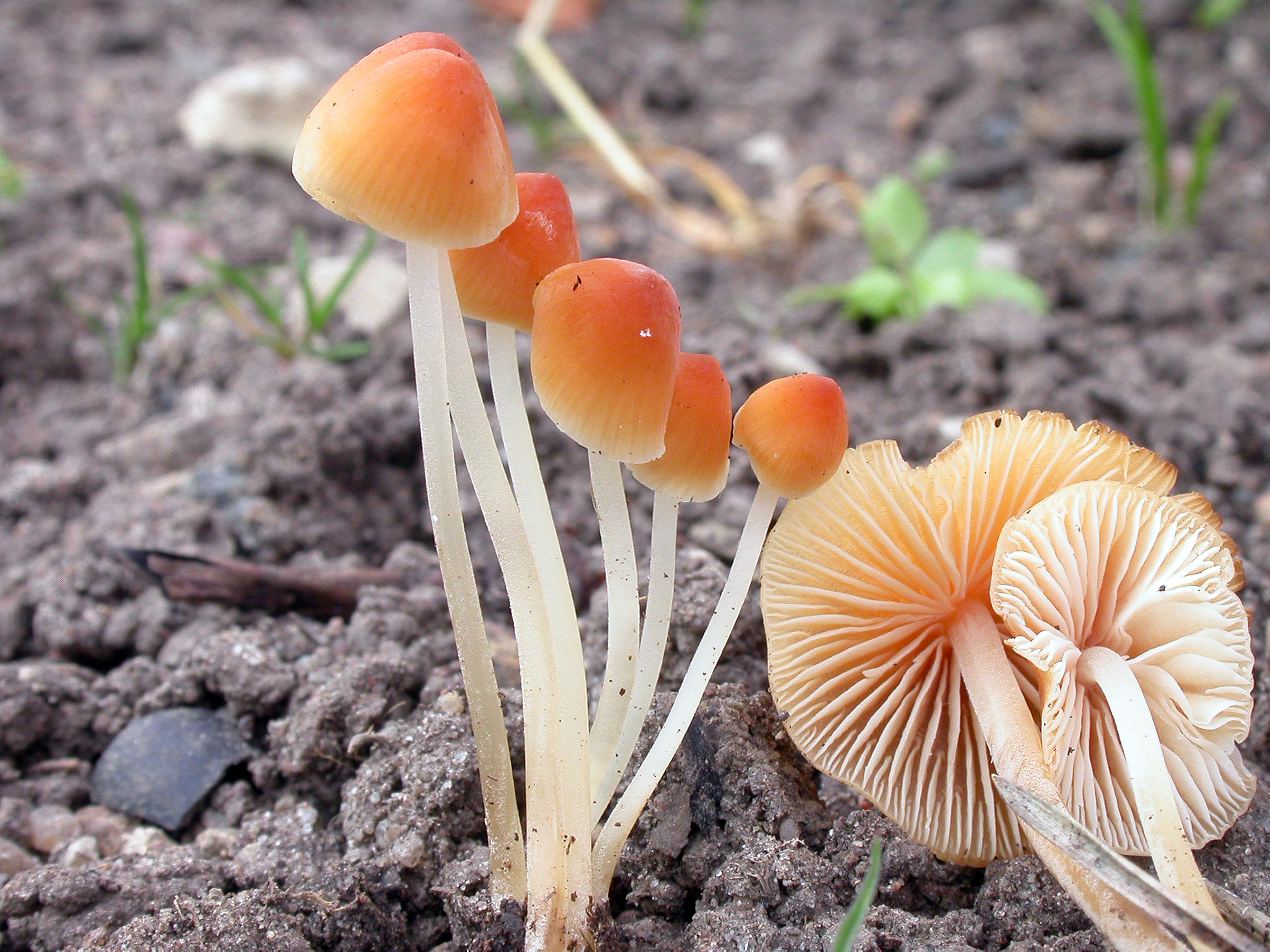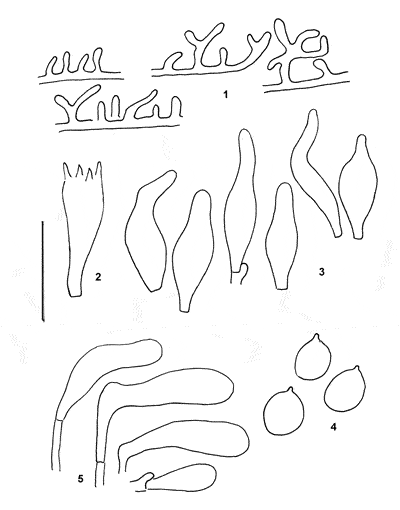Atheniella leptophylla
Atheniella leptophylla
- Innhold
- Description
- Ecology and distribution
Description
1. Hyphae of the pileipellis, 2. Basidium, 3. Cheilocystidia, 4. Spores, 5. Caulocystidia.
Cap 5-30 mm across, conical to campanulate, expanding to parabolical or convex, with or without an umbo or papillate, delicately pruinose, glabrescent, hardly or shallowly sulcate, translucent-striate, somewhat hygrophanous, ochraceous orange-yellow, vivid orange, orange-brown, paler at the margin, darker, deep orange to brown at the centre. Gills 20-26 reaching the stem, adnexed, ±decurrent with a short tooth, becoming dorsally intervenose, cream to pale ochraceous or with an incarnate flush, the edge paler to whitish. Stem 20-80 x 1-2 mm, cylindrical, equal, entirely pruinose to minutely puberulous, at first watery white, turning greyish brown to fairly dark brown from the base, the base mostly extended into a long root, densely covered with whitish fibrils. Odour indistinctive. Basidia 24-30 x 7-9 um, clavate, 2- 4- spored on the same lamella, with sterigmata up to 5 um long. Spores 6.8-9.5(-10.5) x 5.5-7.2 um, Q = 1.1-1.4, Qav = 1.3, broadly pip-shaped to citriform to subglobose, with strongly projecting apiculus, non-amyloid. Cheilocystidia 16-48 x 4-14.5 um, forming a sterile band, fusiform, clavate, subutriform, obovoid, or somewhat irregularly shaped, apically broadly rounded to mucronate. Pleurocystidia similar if present. Lamellar trama not dextrinoid. Hyphae of the pileipellis 1-4.5 um wide, covered with simple to branched, straight to curved, cylindrical excrescences up to 14.5 x 2 um which tend to form dense masses. Hyphae of the cortical layer of the stem 1.5-4 um wide, smooth. Caulocystidia 15-50 x 3.5-8 um, clavate to fusiform, smooth. Clamps present in all tissues.
Ecology and distribution
Single to gregarios near the base of trees in decidious or mixed broad-leaved and coniferous woods or on moss-covered fallen logs, typically with Fagus. Late summer to autumn. Not yet found in Norway.

